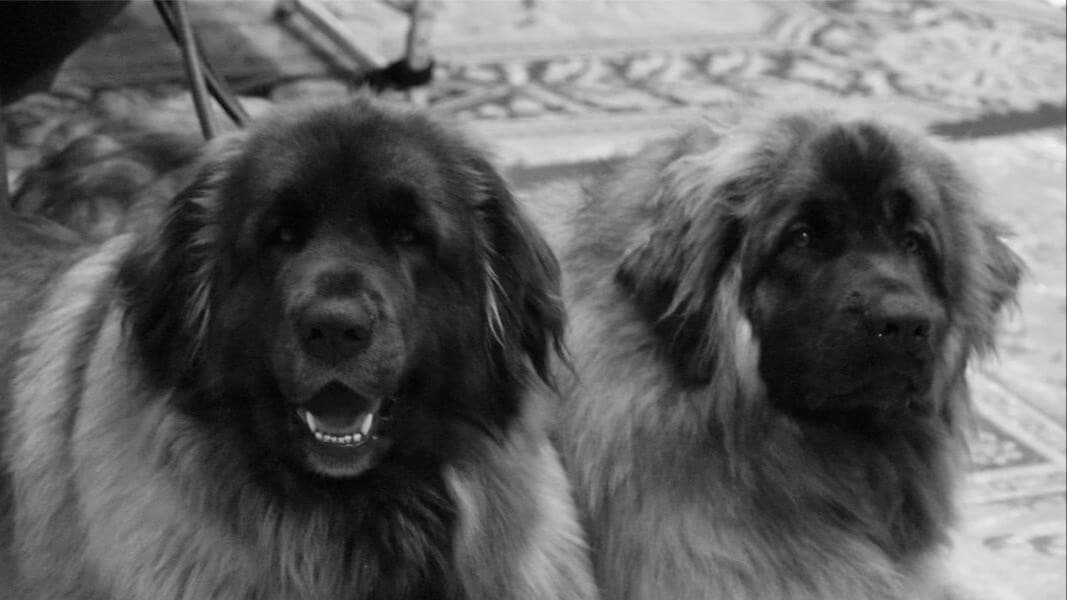
A Rookie’s Look at the Leonberger
Megan Currier shares her journey with Leonbergers, highlighting their versatility, temperament, and her experiences in breeding.

Home » Meet The Breeds » Leonberger Dog Breed

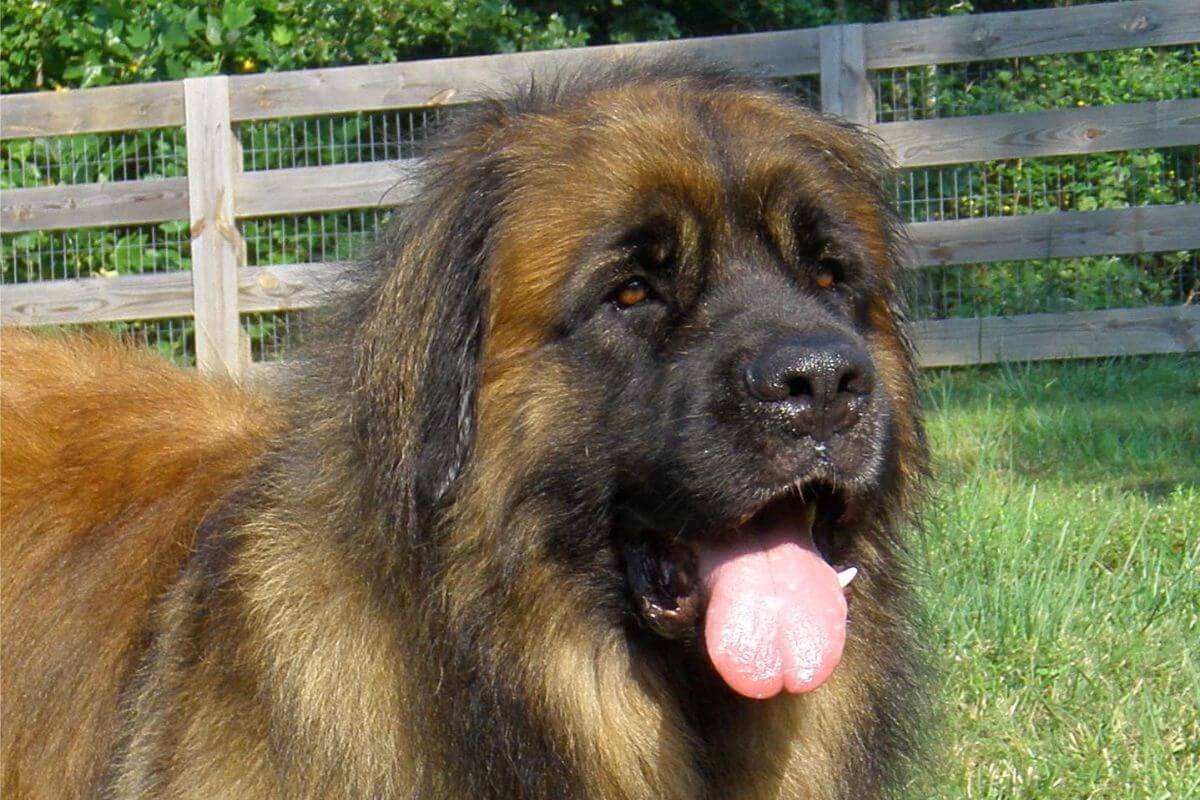
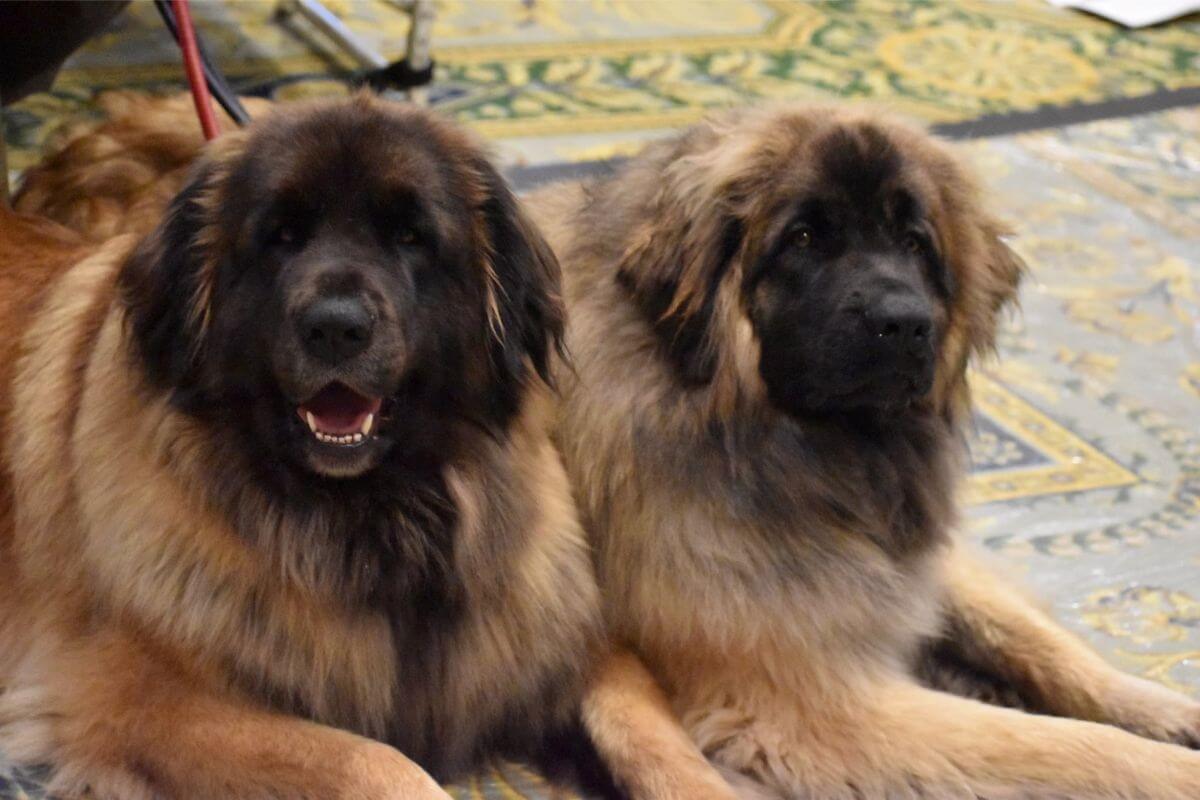
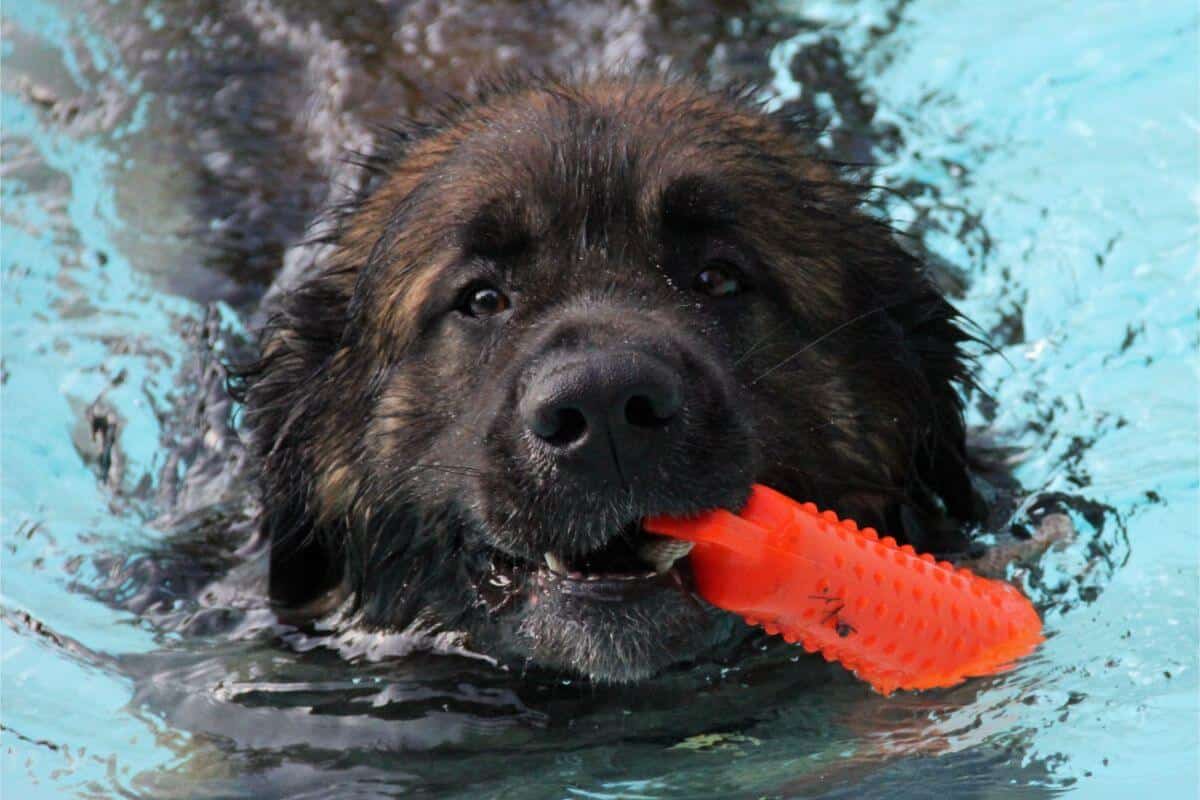
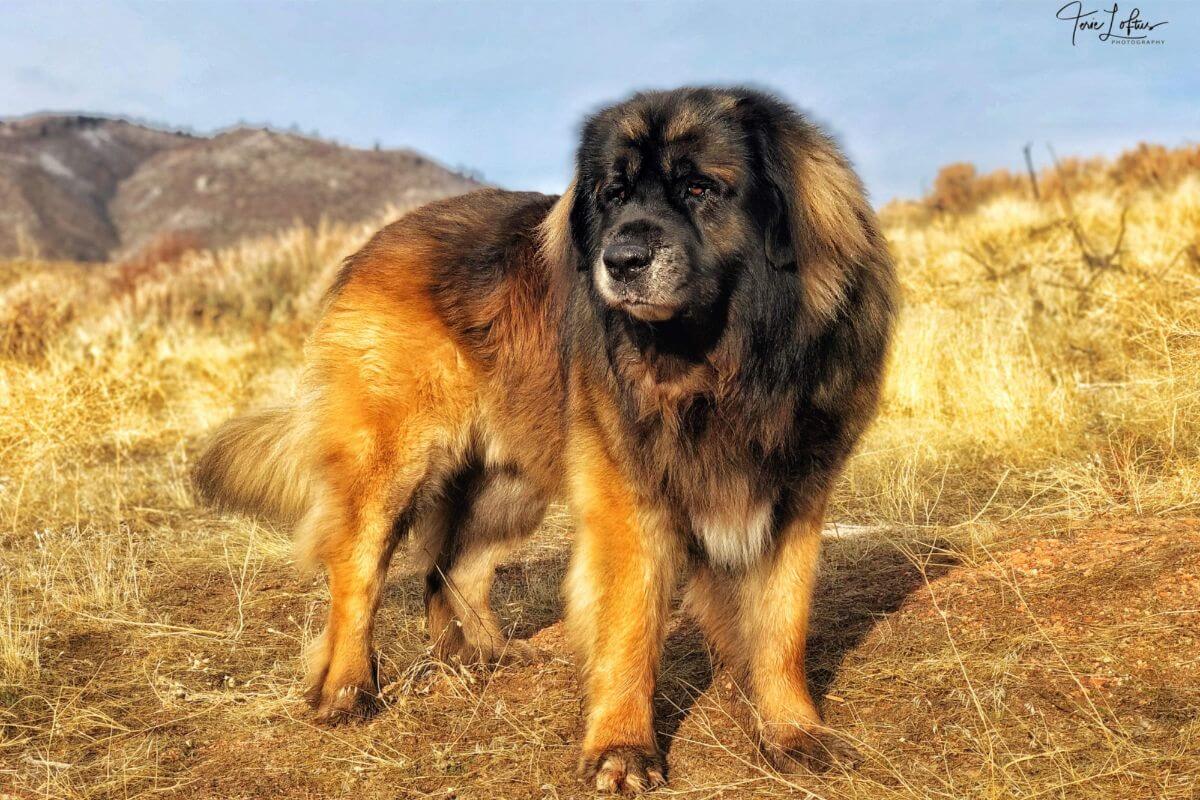
The Leonberger is a giant working breed known for its strength, intelligence, and gentle temperament. Originally developed in Germany, this breed was created as a multi-purpose farm and draft dog with the appearance of a lion and the temperament of a devoted companion. Leonbergers are versatile, excelling in draft work, water rescue, and participation in family activities.
Working
25.5 – 31.5 inches
90 – 170 pounds
7 years
| Country of Origin | Germany |
|---|---|
| Bred For | Lion-like Appearance |
| Known For | Black Mask, Friendliness, Lion-Like Mane |
| Popularity | Low |
| Temperament | Gentle, Friendly, Playful |
| Activities | Drafting, Swimming, Conformation Shows, Dog Sports |
The Leonberger was developed in the mid-19th century in the town of Leonberg, Germany, by Heinrich Essig, a politician and dog breeder. Essig aimed to create a large, majestic breed that resembled a lion, the symbol of the city. To achieve this, he reportedly crossed the Newfoundland, Saint Bernard, and Great Pyrenees, blending the traits of strength, endurance, and a gentle disposition. While Essig’s exact breeding records are unclear, historical accounts suggest that the breed quickly gained popularity among European nobility and working-class families alike.
By the late 19th century, the Leonberger had established itself as a versatile working dog. It was used for draft work and companionship, with some individuals excelling in water rescue roles due to a strong swimming ability. The breed’s popularity eventually spread throughout Europe, and it became a favored companion of royals, including Napoleon III, Empress Elisabeth of Austria, and Tsar Alexander II of Russia.
The Leonberger’s population suffered greatly during World War I, with many dogs lost due to food shortages and the destruction of breeding programs. By the end of the war, only a handful of Leonbergers remained, and dedicated breeders worked to restore the population. A similar decline occurred during World War II, once again bringing the breed close to extinction. After the war, a small group of European breeders focused on rebuilding the breed, selecting for both health and temperament to ensure its survival.
The Fédération Cynologique Internationale (FCI) officially recognized the Leonberger in 1948, solidifying its status as an established breed in Europe. In the United States, the Leonberger was recognized by the American Kennel Club (AKC) in 2010, entering the Working Group.
Adult Leonberger males stand between 28 and 31.5 inches tall at the shoulder, while mature females range from 25.5 to 29.5 inches tall. Their substantial build is reflected in their weight, with males weighing from 110 to 170 pounds and females coming in at 90 to 140 pounds.
The Leonberger is slightly longer than tall, with a deep chest and a strong, well-proportioned body. Solid bone structure and a muscular build provide endurance and strength, essential for the breed’s historical roles. While imposing in stature, the breed should not appear overly bulky or heavy. Instead, it should maintain a balanced and athletic form.
Texture: The Leonberger has a thick, water-resistant double coat that provides protection in various weather conditions. The outer coat is straight, medium-soft to coarse in texture, and lies flat, while the undercoat is soft and dense, helping to regulate body temperature. Despite the double coat, the outline of the body is always visible. The coat of the males is typically longer than that of the females, and males typically have a more pronounced mane around the neck and chest, giving them a more lion-like appearance.The ears have some feathering and the forelegs and hind legs have ample feathering. The tail is very well furnished with hair.
| Standard Color | |
|---|---|
| Yellow | y |
| Red | y |
| Reddish Brown | y |
| Sandy | y |
| Standard Marking | |
|---|---|
| Black Mask | y |
A Note About Color: The coat colors are lion-yellow, golden to red and red-brown, sand-colored (cream, pale yellow), and all combinations thereof, always with a black mask. All colors may have black tips (some with long black tips) on the outer coat, but black must not be the basic color. Dark coat colors are accompanied by a lighter-colored undercoat and feathering of the front and hind legs. A small, unobtrusive stripe or white patch on the chest, and some white hairs on the toes, is tolerated. Any color other than those listed, and white hair on the chest that exceeds five inches in width, and white extending beyond the toes, is a disqualification in the show ring.
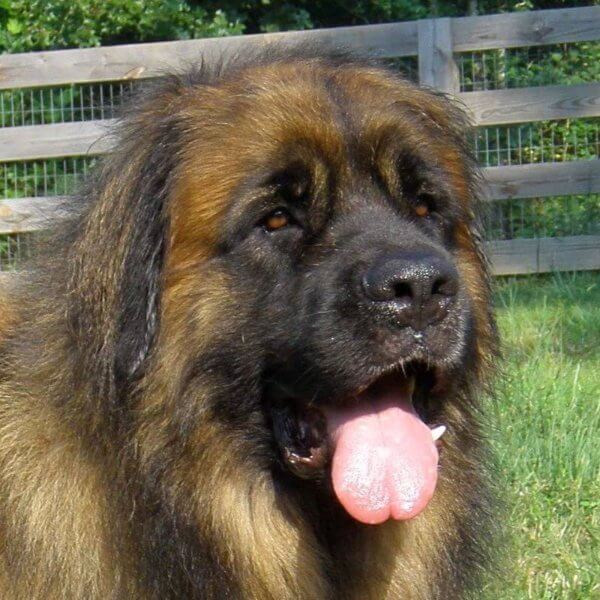
The Leonberger has a long, well-furnished tail that reaches at least to the hock. When at rest, the tail hangs straight down with a slight curve at the tip, and when in motion or alert, it is carried slightly above the topline but never curled over the back. The tail is covered with dense furnishings, complementing the breed’s natural appearance.
Sharing life with a Leonberger requires dedication and a commitment to the breed’s size, exercise needs, and grooming requirements. These dogs are intelligent, affectionate, and highly social, thriving in homes where they receive plenty of attention and interaction.
The Leonberger is generally a healthy breed, but like dogs, individuals can be prone to certain health issues that require monitoring. With proper care, a Leonberger typically lives around 10 years.
Responsible breeders conduct health screenings to minimize genetic conditions, but prospective owners should be aware of common health concerns.
The most common health concerns in the Leonberger include:
The Leonberger is known for its gentle, intelligent, and affectionate nature, making it an excellent companion for families and individuals alike. Despite the breed’s imposing size, these dogs are remarkably patient and kind, often referred to as “gentle giants.” They form strong bonds with their owners and thrive on companionship, making them unsuitable for homes where they will be left alone for prolonged periods. Their loyalty and intelligence make them highly trainable, but they respond best to positive reinforcement and consistent leadership.
Leonbergers are typically friendly with strangers but may retain a natural watchdog instinct, meaning they will alert their owners to unusual activity without excessive aggression. They are good with children and other pets, particularly when socialized from an early age. Due to their large size and strength, early obedience training is crucial to help them remain manageable in adulthood. Their playful and affectionate temperament makes them a wonderful addition to active households that can provide them with the attention and engagement they need.
Proper nutrition is essential for maintaining the health and longevity of the Leonberger, particularly due to the breed’s large size and rapid growth rate. Puppies should be fed a large-breed puppy formula to support slow, steady development and reduce the risk of joint problems. Overfeeding or excessive calcium intake can contribute to orthopedic issues, so portions should be controlled carefully.
Adult Leonbergers typically consume 5 to 7 cups of high-quality dry food per day, split into two meals. They can benefit from a balanced diet rich in lean proteins, healthy fats, and joint-supporting nutrients such as glucosamine and chondroitin. Fresh water should always be available, and treats should be given in moderation.
Leonbergers are highly intelligent and eager to please, making them relatively easy to train with consistent, positive reinforcement. They respond well to reward-based methods and enjoy learning new commands, but they can become stubborn if handled harshly or inconsistently. Early training and firm but gentle leadership are essential to instill good manners and leash control.
Due to the Leonberger’s size and strength, proper socialization is crucial from an early age to ensure good behavior as an adult. These dogs should be exposed to different environments, people, and other animals to prevent shyness or overprotectiveness. Leash training is particularly important, as an untrained Leonberger can be difficult to control due to its size and strength. With proper training and structure, they can grow into well-mannered, adaptable companions that excel in both family life and working roles.
The Leonberger has moderate to high exercise needs, requiring daily physical activity to stay healthy and mentally engaged. Despite the breed’s large size, these dogs are agile and energetic, enjoying activities such as long walks, swimming, hiking, and light draft work. They are particularly strong swimmers and can excel in water rescue training.
| Energy Level | Moderate |
|---|---|
| Exercise Requirements | 1 Hour/Day (Minimum), Daily Walks, Vigorous Running, Regular Exercise, Mental Stimulation |
Leonberger puppies should have controlled exercise to prevent stress on their developing joints, avoiding excessive running or jumping. Adults benefit from structured activities that allow them to use their strength and endurance without overexertion. While they enjoy outdoor adventures, they are also content to relax at home with their family following periods of moderate exercise.
The Leonberger has a thick, water-resistant double coat that requires regular maintenance. Weekly brushing is necessary to prevent matting and remove the loose hair, with more frequent brushing needed during seasonal shedding periods in spring and fall. The hair is prone to collecting dirt and debris, so regular coat care helps to maintain overall cleanliness.
| Coat Type | Double, Weather-Resistant, Medium Soft to Coarse, Straight |
|---|---|
| Grooming Requirements | Weekly Brushing, Occasional Bathing, Routine Ear Cleaning, Periodic Nail Trimming, Regular Tooth Brushing |
Due to the Leonberger’s size and thick coat, grooming sessions should start at a young age to make sure the dog is comfortable with being handled. Bathing should be done only as needed. Routine ear cleaning, nail trimming, and dental care are essential for maintaining overall health.
Leonbergers thrive in homes where they have ample space and plenty of human companionship. While they can adapt to various living environments, they do best in homes with a secure yard where they can move about freely. They are not suited for apartment living due to their size and exercise needs.
The breed’s thick coat makes these dogs well-suited for colder weather, but they can struggle in hotter climates and require access to shade, fresh water, and limited outdoor activity in extreme temperatures. Leonbergers form strong bonds with their families and should not be left alone for prolonged periods, as they can develop separation anxiety. They are, however, ideal for active households that can provide them with both exercise and companionship.
Leonberger puppies require careful training, socialization, and structured guidance to help them grow into well-mannered and confident adults. Due to their rapid growth and large size, they need a balanced diet, controlled exercise, and early obedience training to support proper development. Their affectionate and intelligent nature makes them highly trainable, but consistent leadership is essential to prevent stubborn or dominant behaviors.
The Leonberger puppy requires a safe and structured environment to support its growth and development. Early crate training can help with housebreaking and provides the pup with a secure place to rest and sleep. Socialization is crucial, as exposing the puppy to new people, environments, and experiences will help it grow into a confident and well-behaved adult.
Feeding should follow a controlled schedule using a large-breed puppy formula to promote steady growth and prevent joint issues. The Leonberger puppy should be fed three to four small meals per day until around six months of age, then transitioned to two meals per day. Overfeeding should be avoided to prevent excessive weight gain, which can strain developing joints.
Exercise should be moderate and controlled, avoiding excessive running or jumping to protect the growing bones. Short, supervised walks and gentle play sessions are ideal. Early obedience training is essential, focusing on basic commands, leash training, and proper social behavior to help the puppy become well-mannered as a large adult.
Regular vet visits, vaccinations, and parasite prevention are important during puppyhood. Grooming should begin early, including brushing, nail trimming, and ear cleaning, to help the puppy become comfortable with handling as it grows.
The Leonberger is recognized by the world’s leading registries and kennel organizations, which categorize the breed into a specific Group based on its unique characteristics. This breed is recognized worldwide under the following Group designations:
| Organization | Group Designation |
|---|---|
| AKC (American Kennel Club) | Working |
| UKC (United Kennel Club) | Guardian |
| CKC (Canadian Kennel Club) | Working |
| ANKC (Australian National Kennel Council) | Utility |
| RKC (The Royal Kennel Club) | Working |
| FCI (Fédération Cynologique Internationale) | Group 2: Pinscher and Schnauzer Molossoid Breeds – Swiss Mountain and Cattle Dogs; Section 2.2: Molossoid Breeds, Mountain Type |
The ideal Leonberger is described by a Breed Standard that is approved by each of the world’s leading registries and kennel organizations. The Breed Standards for this breed may be found in the following links:
| Organization | Breed Standard |
|---|---|
| American Kennel Club | AKC Leonberger Breed Standard |
| United Kennel Club | UKC Leonberger Breed Standard |
| Canadian Kennel Club | CKC Leonberger Breed Standard |
| Australian National Kennel Council | ANKC Leonberger Breed Standard |
| The Royal Kennel Club | RKC Leonberger Breed Standard |
| Fédération Cynologique Internationale | FCI Leonberger Breed Standard |
Although the Leonberger is supported by ardent supporters around the world, some dogs can find themselves in need of a new home due to changes in their owners’ circumstances. Below are some of the primary rescue groups dedicated to the breed:
For those looking to adopt a Leonberger, local animal shelters, working dog rescues, and broader breed-specific organizations can also be good resources. While Leonbergers are not frequently found in shelters, individuals may occasionally be available locally.
Yes, Leonbergers shed year-round, with heavy seasonal shedding in the spring and fall. Regular brushing, especially during shedding seasons, helps to control the loose hair and keeps the coat in good condition.
No, Leonbergers are not hypoallergenic, as they have a thick double coat that sheds frequently. Their hair can trap dander and allergens, making the breed unsuitable for allergy sufferers.
Leonbergers typically live around 10 years, though some may live longer with proper care. A healthy diet, regular exercise, and routine veterinary check-ups can help to extend a dog’s lifespan.
Yes, Leonbergers are excellent family dogs, known for their gentle, affectionate, and patient nature, especially with children. However, due to their large size, they require early training and supervision around small children to prevent accidental knocks and bumps.
Leonbergers are not excessive barkers, but they will bark when necessary to alert their owners to strangers or unusual activity. With proper training, any excessive barking can be managed while maintaining the breed’s natural watchdog instincts.

Megan Currier shares her journey with Leonbergers, highlighting their versatility, temperament, and her experiences in breeding.

Kado, an Australian Shepherd, brought joy as a Therapy Dog and Pet Educator, positively impacting hospitals and schools.
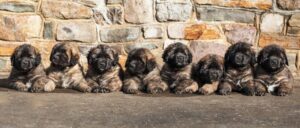
Matthew & Susan Townsend are the breeders behind Sforzando Leonbergers. Read about the kennel’s beginnings, champions, puppies, photos & more!
The best way to ensure a long and happy relationship with a purebred dog is to purchase one from a responsible breeder. Not sure where to begin?
Contact the National Parent Club’s Breeder Referral Program, which is listed on the AKC Breeder Referral Contacts page.
